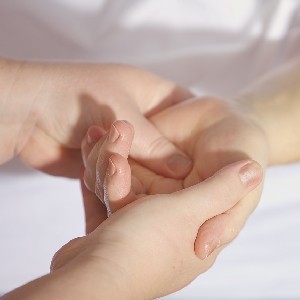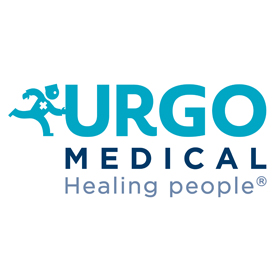Ulcere cutanee-microbiota-ulcere infette

Ricevuto: 23 aprile 2023
Accettato: 16 ottobre 2023
Published: 14 dicembre 2023
Accettato: 16 ottobre 2023
Abstract Views: 183
PDF: 136
PDF (English): 27
PDF (English): 27
Publisher's note
All claims expressed in this article are solely those of the authors and do not necessarily represent those of their affiliated organizations, or those of the publisher, the editors and the reviewers. Any product that may be evaluated in this article or claim that may be made by its manufacturer is not guaranteed or endorsed by the publisher.
All claims expressed in this article are solely those of the authors and do not necessarily represent those of their affiliated organizations, or those of the publisher, the editors and the reviewers. Any product that may be evaluated in this article or claim that may be made by its manufacturer is not guaranteed or endorsed by the publisher.
Articoli simili
- Paola Pini, Il microbiota cutaneo e le sue interazioni con l’ospite , Italian Journal of Wound Care: V. 6 N. 1 (2022)
- Fabio Mozzarelli, Sara Gaetti, La valutazione delle ulcere vascolari degli arti inferiori attraverso la Wound Trend Scale: l'esperienza dell'Azienda USL di Piacenza/Assessment of vascular ulcers of the lower limbs through the Wound Trend Scale: the experience of the LHA of Piacenza , Italian Journal of Wound Care: V. 2 N. 1 (2018)
- Ciro Falasconi, Vincenzo Amalfi, Patrizia Baroni, Giovanni Vito Corona, Corrado Maria Durante, Paola Fanin, Caterina Favaro, Massimo Fornaciari, Alessandro Farris, Manuela Galleazzi, Francesco Giacinto, Giorgio Guarnera, Vincenzo Lauletta, Mario Marazzi, Marco Masina, Vincenzo Mattaliano, Giovanni Battista Mosti, Giuseppe Nebbioso, Francesco Stanganello, Francesco Petrella, Indagine conoscitiva sul dolore nel paziente con le lesioni croniche cutanee , Italian Journal of Wound Care: V. 1 N. 1 (2017)
- Giuseppe Nebbioso, C. Albanese, F. Bonat, A. Botta, Giovanni Vito Corona, Cira Costagliola, Corrado Maria Durante, Ciro Falasconi, D. Foglietti, Francesco Giacinto, Pasquale Longobardi, Klarida Hoxha, Cosimo Maglio, Vincenzo Mattaliano, Massimo Menculini, Giovanni Battista Mosti, Carmela Orefice, Sonia Remafedi, Donatella Rossolini, Felice Tafuro, Francesco Petrella, Qualità della vita nello studio Wound Care. Rapporto conclusivo , Italian Journal of Wound Care: V. 1 N. 1 (2017)
- Francesco Giacinto, Ciro Falasconi, Elisabetta Giacinto, Manuela Germano, Domenica Ciuffoletti, The use of modern technologies based on telemedicine in wound care: experience in high-tyrrhenian region and the province of Cosenza, Italy/L'impiego delle moderne tecnologie della telemedicina nel wound care: esperienza dell'alto tirreno cosentino , Italian Journal of Wound Care: V. 2 N. 1 (2018)
- Elia Ricci, Monica Pittarello, Valutazione clinica dell’efficacia e della tollerabilità di un nuovo presidio a base di Rigenase® e poliesanide nel trattamento di lesioni cutanee croniche , Italian Journal of Wound Care: V. 6 N. 2 (2022)
- Paola Pini, Il microbiota: Come colonizzo l’essere umano , Italian Journal of Wound Care: V. 6 N. 1 (2022)
- Elisabetta Sardone, Elena Toma, Indagine conoscitiva: la valutazione e la gestione del paziente portatore di lesioni cutanee/Learning survey: assessment and management of the patient with wounds , Italian Journal of Wound Care: V. 2 N. 1 (2018)
- Patrizia D'Incecco, Gestione delle lesioni cutanee dolorose e potenzialmente infette: Attività trasversali dell’infermieristica di famiglia e comunità , Italian Journal of Wound Care: V. 6 N. 2 (2022)
- Michela Crisci, Giovanni Lepore, Federica Feleppa, Alessandro Crisci, Fabiana Flagiello, Analisi citomorfologica di fibrina ricca di piastrine liquida prodotta con centrifuga ad angolo fisso DUO (Process, Francia) per l’uso nella terapia rigenerativa delle ulcere cutanee , Italian Journal of Wound Care: V. 7 N. 3 (2023)
Puoi anche Iniziare una ricerca avanzata di similarità per questo articolo.



 https://doi.org/10.4081/ijwc.2023.98
https://doi.org/10.4081/ijwc.2023.98






